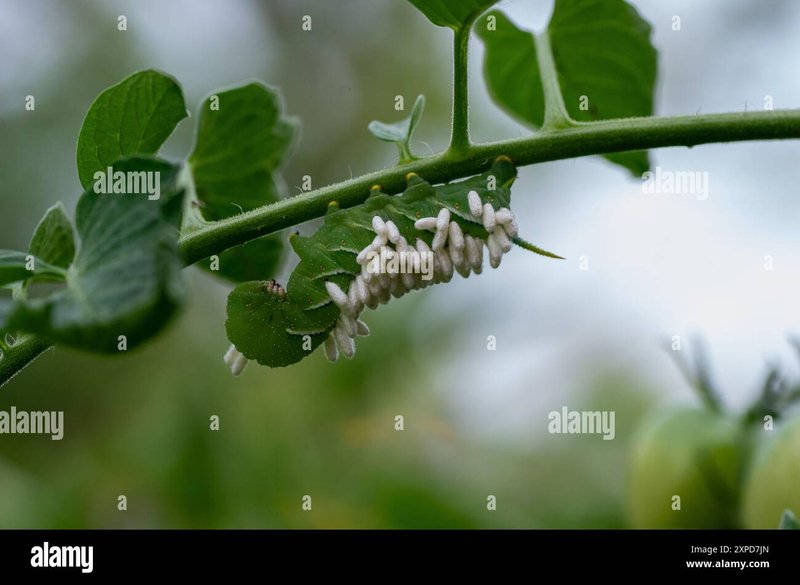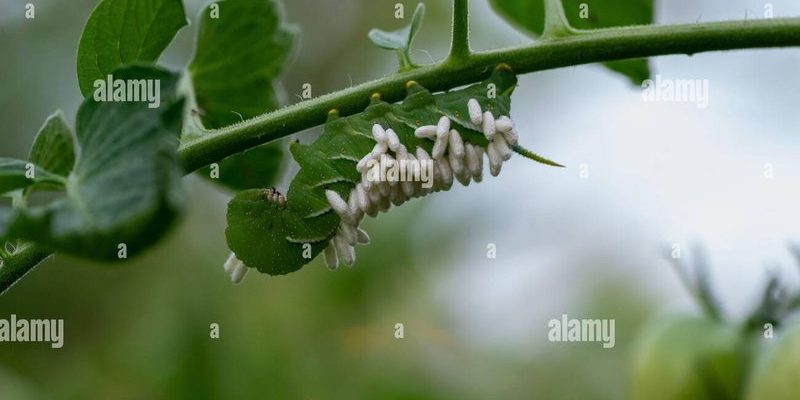
Understanding the signs of parasitism in hornworm larvae is important for gardeners and nature enthusiasts. It can help you manage your garden better while also getting a glimpse at the complex interactions in our ecosystems. So, let’s take a closer look at these green critters and how parasitism affects their lives.
What Exactly Is Parasitism?
Parasitism is a relationship where one organism, the parasite, benefits at the expense of another, the host. In our case, hornworm larvae serve as the host for various parasites, which can be insects or even microorganisms. The parasite lives off the host, often harming it in the process. Imagine hosting a friend who eats all your snacks and never leaves. That’s how hornworms might feel when a parasite takes up residence!
These relationships can range from mildly annoying to life-threatening. Some parasites can take control of a hornworm’s behavior, leading it to make decisions that are beneficial for the parasite but harmful for the hornworm. This unnatural manipulation is a key component in understanding the ecological roles of these often-overlooked pests.
Identifying Infected Hornworm Larvae
So, how do you know if a hornworm is under siege from parasitism? Here are some signs to look out for:
- Physical Appearance: Infected hornworms often show unusual coloration or texture. They may look shriveled or have a more dull color compared to healthy larvae.
- Movement: While healthy hornworms are active and move around to find food, infected ones may appear sluggish or less responsive.
- Behavior Changes: If the hornworm is moving upward away from the ground instead of staying close to the plants, this could signal a lurking parasite.
- Presence of Eggs: Sometimes, you’ll see tiny white or brown eggs on the larvae’s back. These are the eggs of parasitic wasps or other insects.
Each of these signs tells a part of the story and can help you determine whether your hornworm is simply having a bad day or is in fact hosting unwelcome guests.
Types of Parasites That Affect Hornworms
Hornworms are susceptible to various parasites, each with its own unique way of invading. Here are a few of the most common culprits:
- Braconid Wasps: These tiny wasps lay their eggs inside the hornworm. The larvae then feed on the hornworm from the inside out, causing serious damage.
- Nematodes: These microscopic roundworms can enter the hornworm’s body and start feeding, resulting in the host becoming weak and lethargic.
- Fungal Infections: Various fungi can infect and kill hornworms, often turning them into mummies that scatter spores in the environment.
What’s wild is that while these parasites are harmful to hornworms, they can be beneficial for gardeners. They help control hornworm populations, which means less pest damage for your plants!
The Lifecycle of Parasitic Wasps
Let’s dive a bit deeper into one of the most well-known parasites: the braconid wasp. The lifecycle of these wasps is a classic example of nature’s drama.
The female wasp lays eggs inside the hornworm’s body. As these larvae hatch, they start to eat the hornworm from the inside. As you can imagine, this isn’t a pleasant experience for the hornworm. Over time, the hornworm’s health declines, and it may wander away from its food source, potentially leading to its demise.
Interestingly, before they die, the hornworm will often exhibit odd behavior, like climbing to a higher location. This is beneficial for the wasps because it helps them disperse once they emerge from the hornworm’s body. It’s a sad tale for the hornworm, but a successful strategy for the wasp!
The Impact of Parasitism on Ecosystems
You might wonder why all this matters. The truth is, parasitism plays a crucial role in maintaining balance within ecosystems. By keeping hornworm populations in check, parasitic wasps and other organisms help ensure that plant life isn’t devoured down to nothing.
This balancing act is important for biodiversity. If hornworms were left unchecked, they could devastate local flora, which would in turn affect other animals and insects that rely on those plants. Parasitism, while harsh, is one of nature’s ways of keeping everything in balance.
How to Manage Hornworm Infestations
If you find yourself battling with hornworms, here are some eco-friendly ways to manage them while keeping an eye out for signs of parasitism:
- Handpicking: A simple and effective way is to handpick the hornworms off your plants. Just be sure to check for any signs of parasitism.
- Encourage Beneficial Insects: Planting flowers that attract braconid wasps can provide natural pest control and help maintain healthy hornworm populations.
- Use Organic Pesticides: If the infestation is severe, consider organic pest control options that won’t harm beneficial insects.
By being proactive, you can maintain your garden’s health while respecting the natural balance of predator and prey.
In the world of hornworm larvae, parasitism shows us a raw and eye-opening view of life. These green munchers are not just simple pests; they’re part of a larger story that includes predators and parasites. Recognizing the signs of parasitism in hornworm larvae helps you understand your garden better and manage it in an eco-friendly way.
Every time you see a hornworm, remember its potential struggles with parasitism. It’s a reminder of nature’s complexity and the delicate balance that sustains it. So, as you sip your coffee and gaze at your plants, take a moment to appreciate the fascinating relationships unfolding right under your nose—who knew gardening could be so dramatic?

